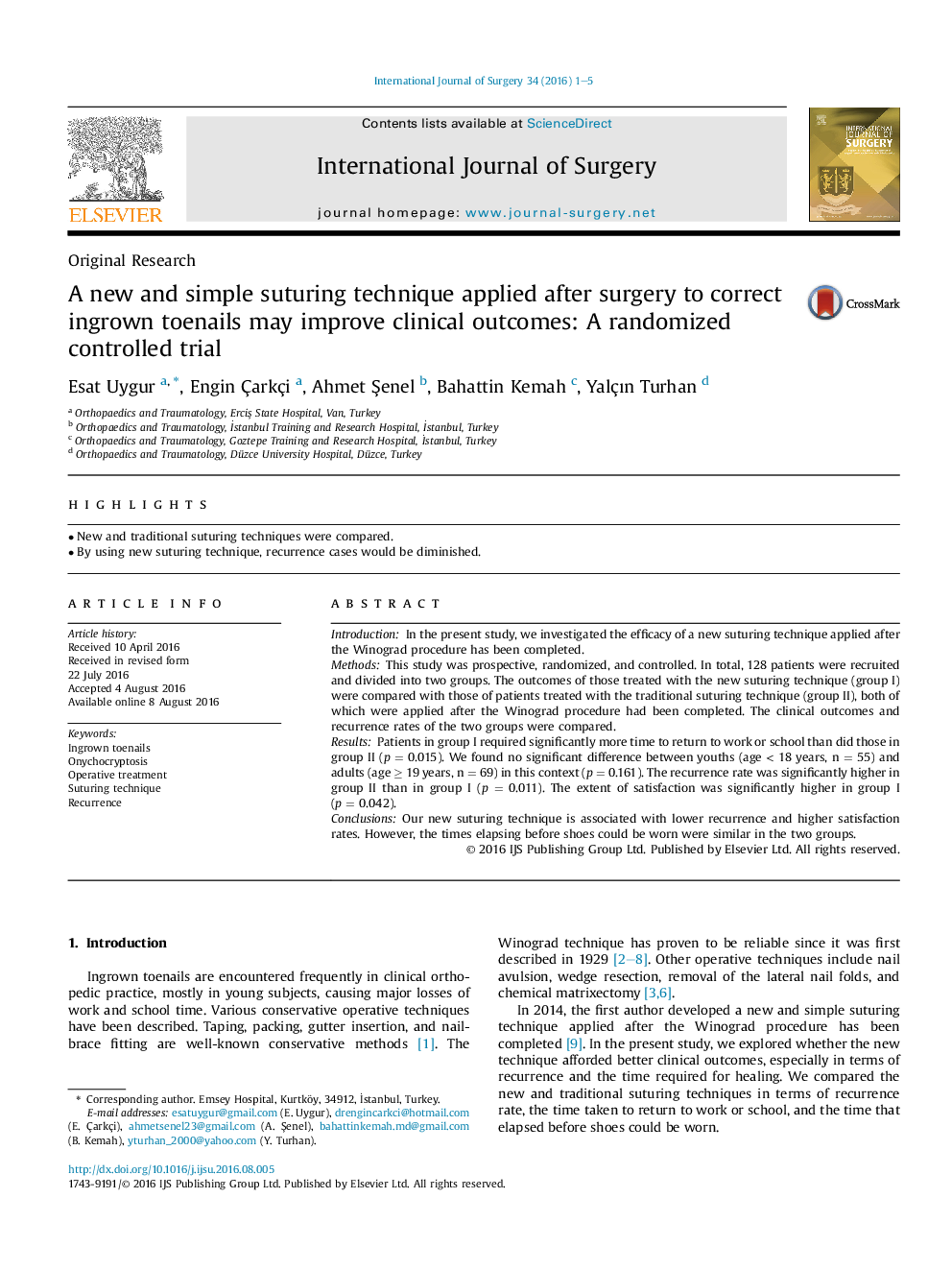| Article ID | Journal | Published Year | Pages | File Type |
|---|---|---|---|---|
| 4285264 | International Journal of Surgery | 2016 | 5 Pages |
•New and traditional suturing techniques were compared.•By using new suturing technique, recurrence cases would be diminished.
IntroductionIn the present study, we investigated the efficacy of a new suturing technique applied after the Winograd procedure has been completed.MethodsThis study was prospective, randomized, and controlled. In total, 128 patients were recruited and divided into two groups. The outcomes of those treated with the new suturing technique (group I) were compared with those of patients treated with the traditional suturing technique (group II), both of which were applied after the Winograd procedure had been completed. The clinical outcomes and recurrence rates of the two groups were compared.ResultsPatients in group I required significantly more time to return to work or school than did those in group II (p = 0.015). We found no significant difference between youths (age < 18 years, n = 55) and adults (age ≥ 19 years, n = 69) in this context (p = 0.161). The recurrence rate was significantly higher in group II than in group I (p = 0.011). The extent of satisfaction was significantly higher in group I (p = 0.042).ConclusionsOur new suturing technique is associated with lower recurrence and higher satisfaction rates. However, the times elapsing before shoes could be worn were similar in the two groups.
